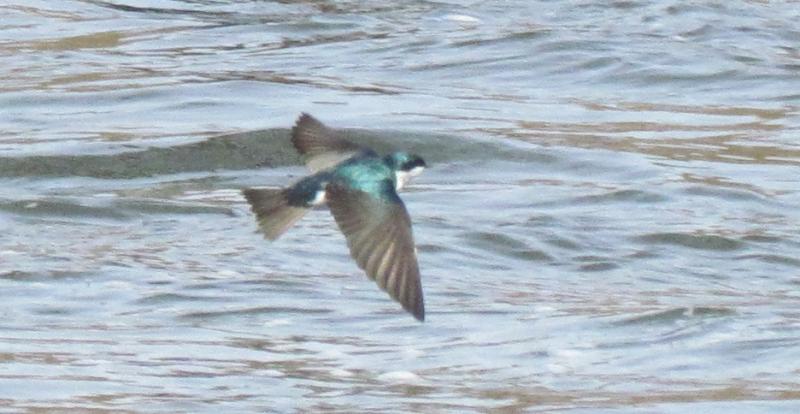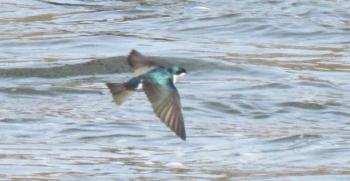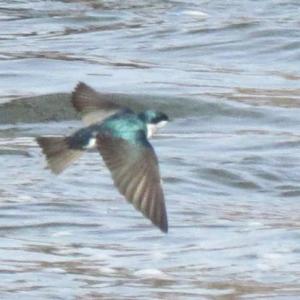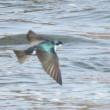Punctuality is for the birds…or is it?
We arrived more than an hour early for the District III 7th/8th Grade Honors Jazz Band concert that our son was participating in at the Boothbay Region Elementary School the other day. We arrived early, to ensure seats that would allow a good view of our favorite trumpet player. As the start time of the concert neared, a swell of people arrived, squeezing into seats and bleachers, with the last arrivals having to stand on the sides.
As it turned out, for those parents whose kids were in the chorus, standing on the side was actually an advantage for photographing and seeing their child perform.
A few days later the first tree swallows—five of them together—arrived in Gardiner. There’s no doubt they were early. In fact, they may have been the first ones that were reported in the state this year. Our curiosity piqued, we took a look at eBird (www.ebird.org) records from the last few days and found that tree swallows had been spotted on Lake Ontario and near Montreal as early as March 9th this year, and that there seemed to be a major northward push of tree swallows on March 12 and 13 that extended into Upstate New York and into Massachusetts at least as far north as Plum Island. We were reminded that one year, we saw tree swallows in late February in Ithaca, New York, at Hog Hole, one of our favorite local birding places, at the foot of Cayuga Lake. These tree swallows were incredibly early, arriving after several days of unseasonably warm temperatures and strong southerly winds.
Why would tree swallows, or any other bird, want to arrive at its destination so early? Just like us at the concert, they wanted the good seats! In the bird world, that would translate to occupying the best territories with the best food supplies and best nesting sites. Being there first makes it harder for a competitor to oust these early birds, and this should give them a better chance to survey the possible locations and find the best one. There are drawbacks to being early; some can be fatal to a bird. A tree swallow that relies on insects for survival will clearly be in trouble if, after an early arrival, cold temperatures prevail that make food unavailable. Cold temps also increase a bird’s energy requirements to maintain body heat, making death a real possibility.
Another potential drawback is that what may look like an ideal territory in the early part of the season may turn out to be a terrible one because of factors the bird could not have predicted. For the early-arriving parent at the concert who picks the perfect seat in order to see their child, this might equate to having a family of very tall people sit in front of you just before the music starts, blocking your view. For an early-arriving bird, it could come in the form of a bird-eating hawk that decides your area is the best place to find food for its young. A species like the bobolink, a bird that builds its nest on the ground in meadows, may inadvertently pick the first hayfield to be mowed each spring, when the young are still in the nest. Such situations are sometimes called “ecological traps.”
We have often wondered what would be found if someone were to study the birds on the other end of the arrival spectrum, those that consistently arrive late. Maybe those tardy robins in the neighborhood get some advantage, at least in some years, for being late. Maybe they are, so to speak, those parents at the concert who had to stand on the side but got great views of their singing chorus members.
Either way, you can be sure we will get to the next concert early!
Jeffrey V. Wells, Ph.D., is a Fellow of the Cornell Lab of Ornithology. Dr. Wells is one of the nation's leading bird experts and conservation biologists and author of the Birder’s Conservation Handbook. His grandfather, the late John Chase, was a columnist for the Boothbay Register for many years. Allison Childs Wells, formerly of the Cornell Lab of Ornithology, is a senior director at the Natural Resources Council of Maine, a nonprofit membership organization working statewide to protect the nature of Maine. Both are widely published natural history writers and are the authors of the book, Maine’s Favorite Birds.
Event Date
Address
United States

























